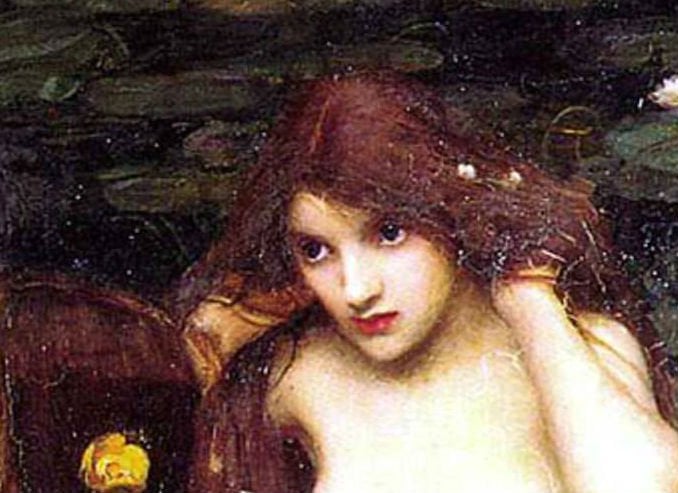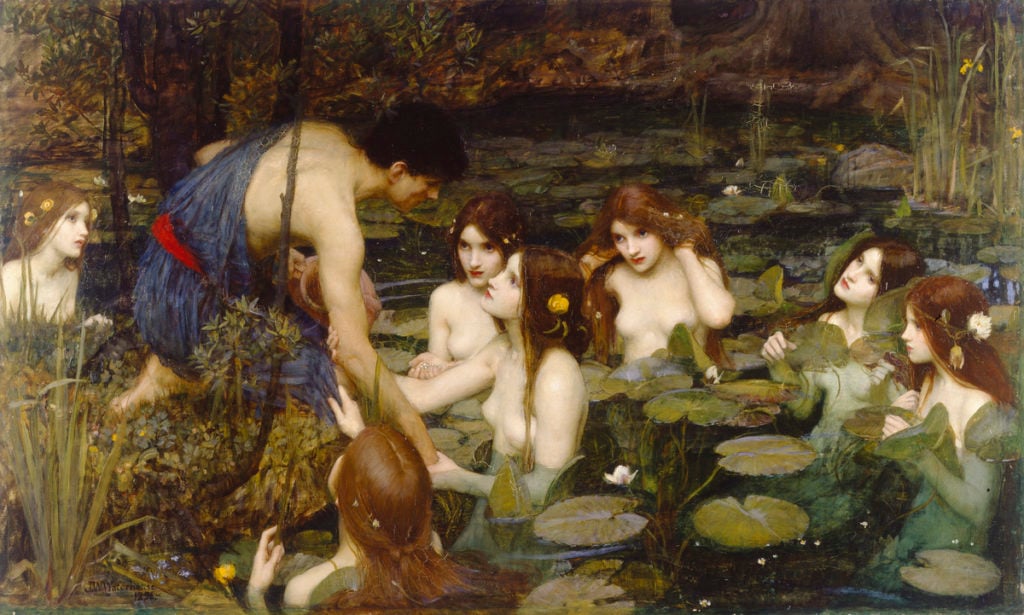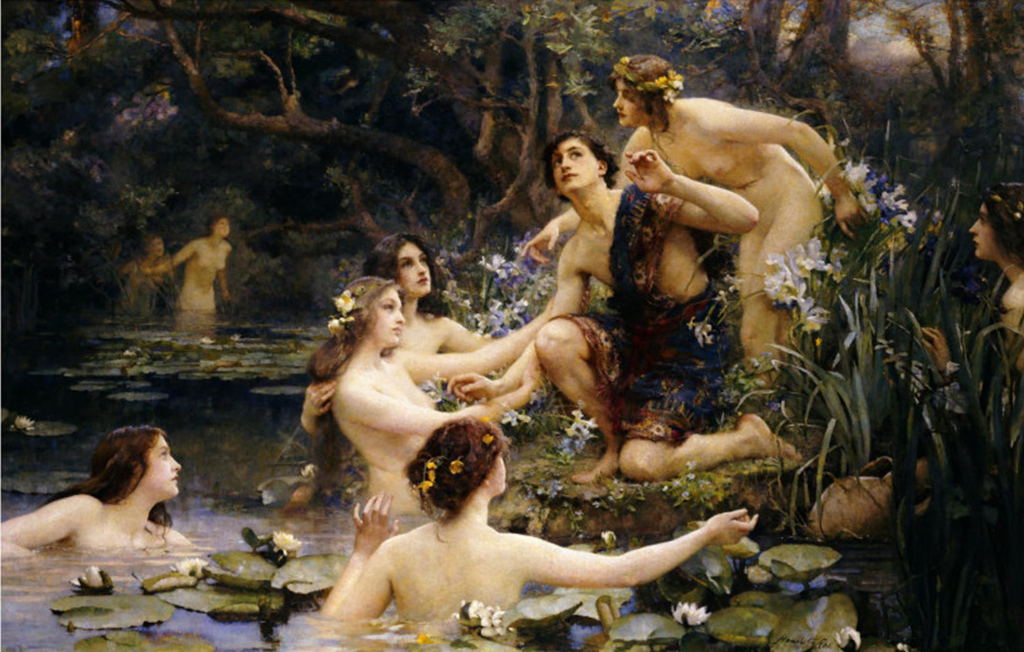Art World
British Art Museum Banishes a Famed Pre-Raphaelite Fantasy Over Its Depiction of ‘Femme Fatale’ Nymphs
The gesture, part of a project by artist Sonia Boyce, has inspired fierce debate.

The gesture, part of a project by artist Sonia Boyce, has inspired fierce debate.

Naomi Rea

On Friday night, a JW Waterhouse painting of naked nymphs was removed from the walls of Manchester Art Gallery in northern England. The move, according to the museum, was a bid to “challenge a Victorian fantasy” and prompt conversation about how the public gallery displays and interprets artworks.
On the night of January 26, the gallery team and invited collaborators took over the gallery and removed the pre-Raphaelite painting Hylas and the Nymphs (1869) from the wall, as well as postcards of the painting from the shop.

John William Waterhouse, Hylas and the Nymphs (1869). Collection of Manchester Art Gallery. Public Domain.
The offending image depicts a mythical scene of bare-chested nymphs tempting Hylas to his death, and is not the only one of its kind in a room devoted to 19th century art that is titled “In Pursuit of Beauty.”
The stunt was filmed as part of a new artwork by Sonia Boyce, who is exploring “gender trouble” in the paintings and wider culture of the 19th century. The full film of the action will be shown in her upcoming retrospective at the gallery, which runs March 23 through September 2.
Gallery 10 may look a little different to how you last saw it… This is to prompt conversation about how we display and interpret artwork in #Manchester’s public collection. #MAGsoniaboyce pic.twitter.com/IXkcODOkTk
— MCR Art Gallery (@mcrartgallery) January 26, 2018
A blog on the museum website claims the “In Pursuit of Beauty” gallery “presents the female body as either a ‘passive decorative form’ or a ‘femme fatale’” and asks “How could artworks speak in more contemporary, relevant ways?”
Members of the public have left post-it note comments in the empty space left by the banished painting, where there is now a notice of explanation.
Some interesting comments already on the @mcrartgallery wall and online too https://t.co/Q667SptU5Y #MAGsoniaboyce Looking forward to more conversation about this… pic.twitter.com/21omdwR9vY
— MAGcurators (@MAGcurators) January 30, 2018
The debate online over the removal is raging. Writer Annas Eskander has launched a petition calling for the return of the painting. Describing how much Waterhouse’s Pre-Raphaelite work meant to her following the death of her husband, she writes:
For years, I have been living in London and thinking how much I would love to see Hylas and the Nymphs at least once in my lifetime. Well, I finally got the opportunity to go to the Manchester Art Gallery only to be told the painting was removed on Friday 26th January as some part of feminist installation relating to the representation of the female body. I cannot express how devastated I am, not only to miss out on seeing the painting but to be told that it may never be exhibited again….
Eskander goes on to call the action “feminist extremism at its worst,” adding “I am truly ashamed to call myself a feminist.”
Hi. Manchester's 'City Art Gallery', did a performance arts piece last night, culminating in the permanent removal of Pre-Raphaelite painting 'Hylas and the Nymphs', because the female staff view it as negative, bad taste, out of date. Is artists freedom in danger? @AJGilchrist
— Michael J Browne (@mjbfineart) January 27, 2018
In a tweet, artist Michael Browne asked, “Is artists’ freedom in danger?”
Others propose alternative images that might be shown in the gallery, like “the same scene, painted in the same period, by a woman, Henrietta R. Rae, who, according to Christie’s, ‘saw herself primarily as a painter of classical themes with a strong emphasis on the female nude,'” Twitter user Philip Dantes wrote.

Henrietta Rae, Hylas and the Water Nymphs (ca. 1909). Courtesy of Christie’s New York.
The museum’s contemporary art curator, Clare Gannaway, told the Guardian she was embarrassed about art presented in the “In Pursuit of Beauty” gallery, and admitted recent debates around #MeToo and Time’s Up influenced her thought process. “We’ve collectively forgotten to look at this space and think about it properly,” she said. “We want to do something about it now because we have forgotten about it for so long.”
As for whether the popular painting will return, Gannaway said, “We think it probably will return, yes, but hopefully contextualised quite differently. It is not just about that one painting, it is the whole context of the gallery.”